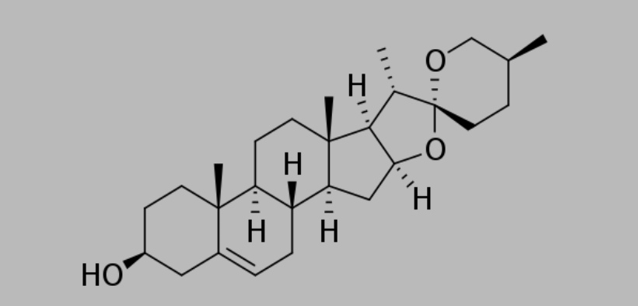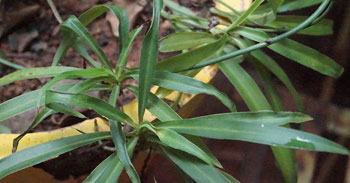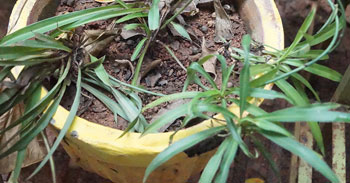KJC Medicinal Garden
White Musli
Chlorophytum borivilianum
Order: Asparagales
Family: Asparagaceae
Genus: Chlorophytum
Species: C. borivilianum
Common Names: Musli
Native to India (tropical wet forests)
Other plants of the same genus with medicinal properties
-
C. tuberosum
C. comosum
- Herb with altitudes upto 1500m. It grows to maximum height of 1.5ft. Tubers can grow upto a depth of 10 inches.
- Leaves: light and dark green colour leaf. It has 6-13 radical leaves spirally imbricate at the base.
- The leaves spread horizontally, with smooth surfaces, wavy margins and parallel ventilation.
- Roots: Pale brown to white colour with characteristic odour and are tasteless in nature.
- Flowers and fruit: The flowers are small, white, pedicillate, zygomorphic usually arranged in clusters. It bears green to yellow coloured fruit which is almost equal in length and breadth.
Uses in Tradition systems of medicine
- Uses in Ayurveda and unani.
- It is known to cure physical illness and weakness.
- It increases general body immunity.
- It is helpful in curing impotency as they are rich in glycosides.
- It has reported to cure diabetes, arthritis.
- The roots are reported to contain 42% of carbohydrates, 8-9% proteins, 3-4% fibres and 2-17% saponins.
- The saponins and alkaloids present in the plant are the primary source.
Suggested Medicinal Properties
- Immunomodulatory
- Anti-ageing
- Antidiabetic
- Antioxidant
- Hypolipidemic
- Antistress
- Antiurolithiatic
- Leucorrhea
- Antitumor
Active Phytochemicals
1.Sapogenin:
Saponins consist of sugar moiety, usually contain glucose, galactose, xylose, glucuronic acid, glycosidically linked to a hydrophobic aglycone (sapogenin) which may be triterpenoid or steroid in nature. The oligosaccharide chain is normally attached at C3 position (monodesmosidic) but many saponins have an additional sugar moiety at the C26 and C28 positions (bidesmosidic).

3. An increase in faecal cholesterol, neutral sterol and bile acid excretion with elevated hepatic 3-hydroxy-3-methylglutaryl coenzyme was reported.
References
1. Payal Sharma, Kaushal K Chandrul. ‘C. borivilianum: a vital herb’.”International journal of Pharmaceutical and Medicinal Research” 2017; 5(1):401-411.
2. G.S.Chakraborthy., Pawan Verma., ”Antimicrobial studies on C. borivilianum” 2014, vol. 5(2), 258-261.

